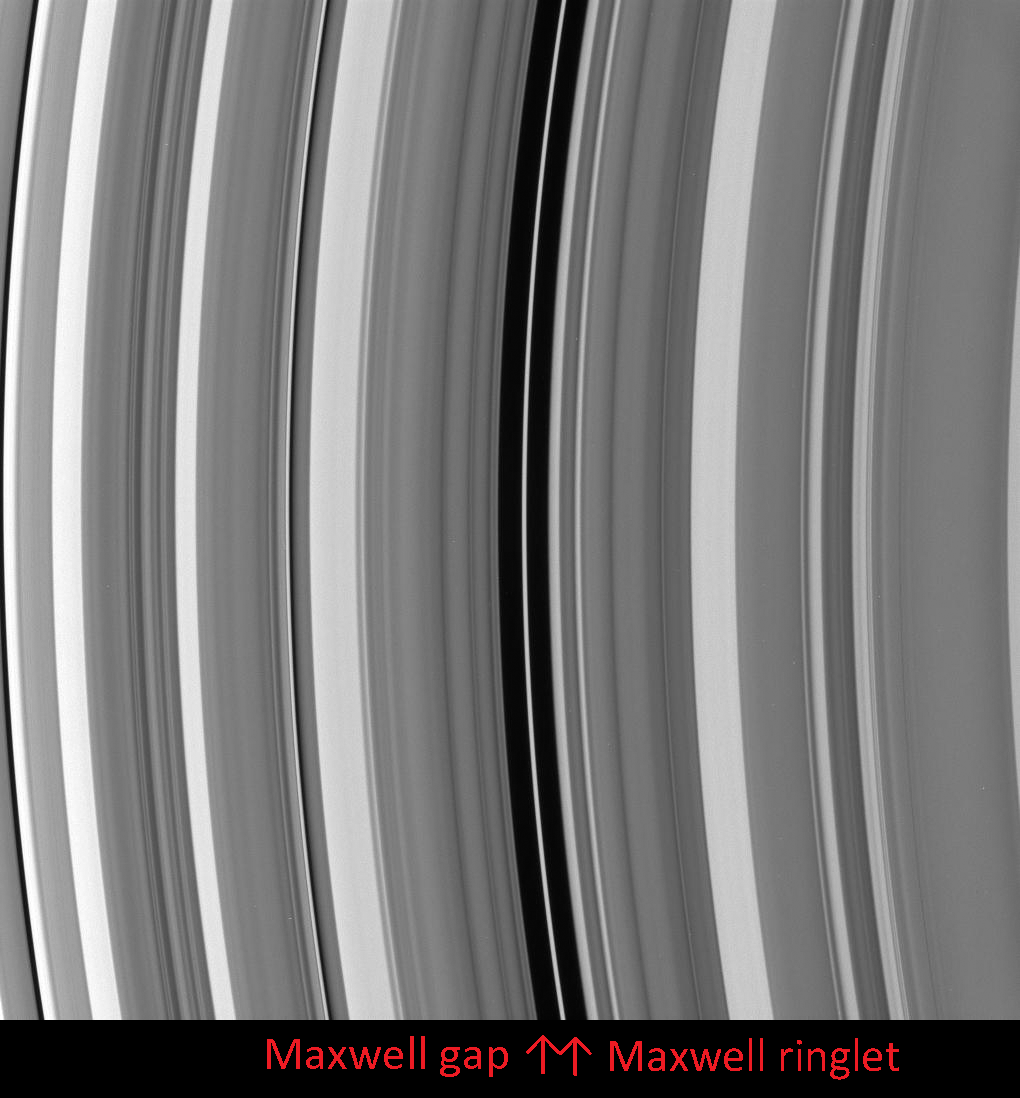
 |
Maxwell ringlet and the Maxwell gap | Maxwell Legacy Concepts |
|---|
In a nutshell |
The Maxwell ringlet and Maxwell gap are features of the C-ring of Saturn. The C-ring is harder to see than the more conspicous and wider A and B rings because it is less populated with material and closer to Saturn. It was found in the 1850s, the decade when Maxwell spent a great deal of thought while Professor at Marischal College, Aberdeen working out what Saturn's rings might be. This was before a single photo had been taken of the rings but it was clear that they were stable, which was the key piece of information that Maxwell had. From a mathematical analysis of the stability of various assumed structures Maxwell concluded that the rings had to be composed of myriads of very small chunks. He also determined that waves in the rings were possible. The naming of the ringlet and the gap in the C-rings after Maxwell is a 20th century tribute to Maxwell's work on the stability of Saturn's rings, which was a tour de force. The adjacent image showing the Maxwell ringlet is courtesy of Wikimedia. |
 |
|---|
| Technical detail |
|
|||
|---|---|---|---|---|

Maxwell realised that a variety of wave motions were possible in such a system and he analysed the type of waves that could propagate. Maxwell was clearly pleased and intrigued by his deduction of the possible existence of ring waves. At his own expense he had the instrument maker Smith & Ramage in Aberdeen construct a model that illustrated two of the 6 types of waves Maxwell had deduced were possible. He took this model with him when he left Aberdeen and it is now at the Cavendish Laboratory in Cambridge, where Maxwell ended up as the first Cavendish Professor of Physics. The model is shown in the image below. It's not obvious from the picture how it works but on rotating the rear ring the balls that represent a ring of satellite material move so as to show a wave travelling around the ring. The final image is an Excel diagram showing an exaggerated view of the satellite displacements for one of the wave modes.  Maxwell's model demonstrating possible wave motion in Saturn's rings There is no way any predicted wave motion could be spotted from Earth but over a century later conspicuous fluctuations in the density of the rings were observed by the Voyager missions in the form of rotating dark spokes, soon realised to be driven by the rotating magnetic field of Saturn. That was an effect Maxwell had not included in his analysis, for in Maxwell's time no-one had any clue that Saturn had a magnetic field. Nonetheless, Maxwell's work is now considered to be the foundation for the analysis of a wide variety of astrophysical discs that are found in many different circumstances in the cosmos. Modern work depends heavily on computer simulation rather than the purely analytical mathematics that Maxwell employed. Reference: For a statement in Maxwell's own words on the problem and the solution he gave concerning the question of the stability of Saturn's rings, see http://www-history.mcs.st-and.ac.uk/Extras/Maxwell_Saturn.html. JSR 2016 |
||||